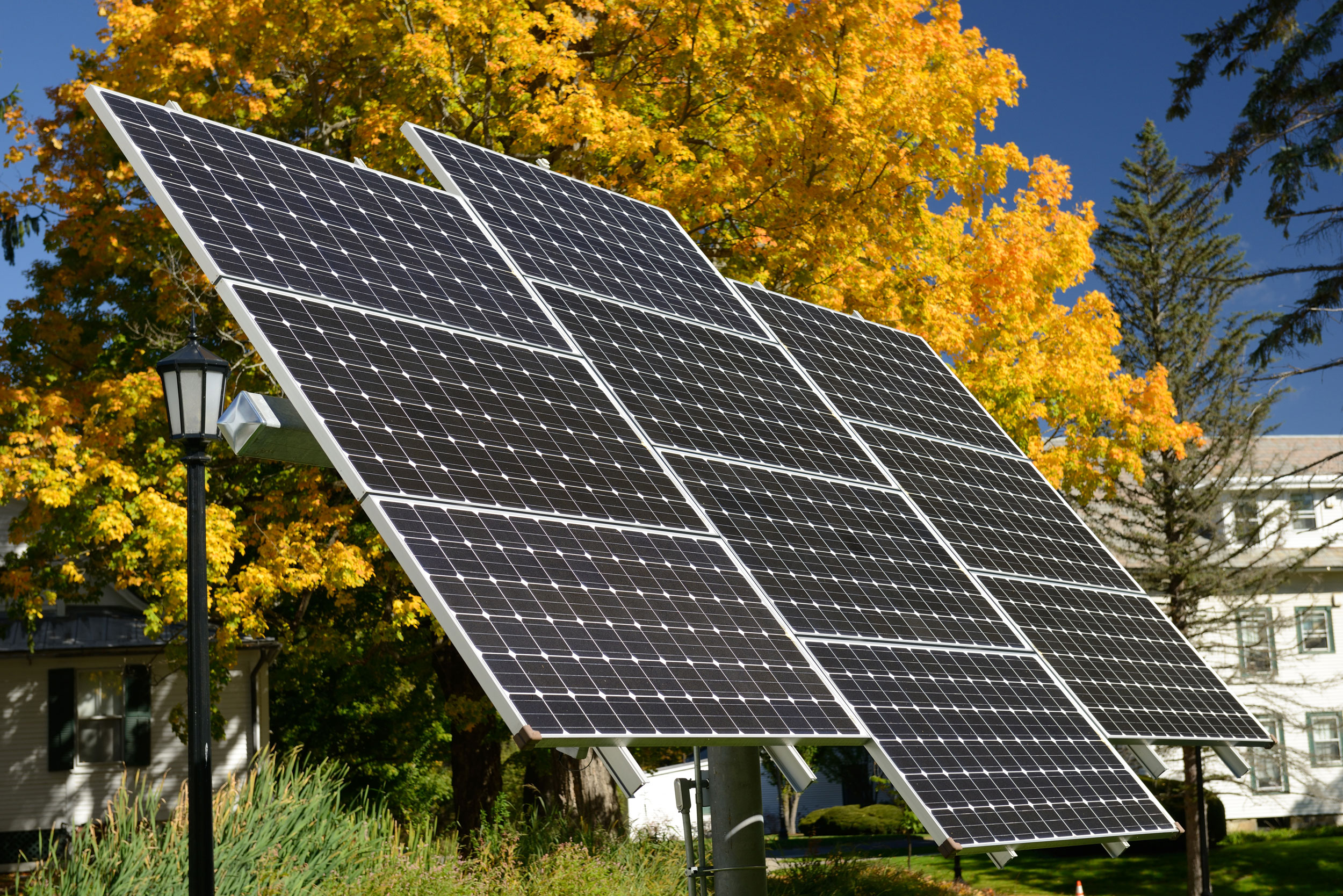Local Solar Saved New Englanders $1.1 Billion+

New Report Quantifies Energy, Public Health, & Climate Cost Savings of Local Solar
Montpelier, VT— Newly available data demonstrates the enormous benefit of local solar power to everyone in New England. From 2014 to 2019, small-scale solar in New England saved utilities and their customers more than $1.1 billion in wholesale electricity costs. Notably, these savings were enjoyed not only by people with solar, but everyone with an electric bill.
In July 2020, ISO New England, the regional grid operator, published for the first time detailed data about the amount of electricity produced every hour by the thousands of small, local solar installations throughout the region. Analyzing this data, a new report from Synapse Economics, the Boston-based energy consulting firm, reveals that local solar produced 8,600 gigawatt-hours of electricity, enough electricity to power more than 1 million New England households for a year.
Energy cost savings accrued in two ways. First, on the hottest, sunniest days, locally-produced renewable energy met a sizable percentage of the region’s peak demand, directly reducing the amount of energy utilities had to purchase. Decreased demand for electricity during peak periods also had a deflationary effect on energy prices. Put simply, “producing renewable energy locally means that utilities don’t have to purchase as much energy to meet peak demand, and what they do purchase is less expensive than it would be with higher demand,” explained Pat Knight, economic analyst at Synapse Energy Economics and lead author of the report. “The new data from ISO-NE clearly shows that local solar has not only lowered utility bills for everyone, it has also reduced the public health and climate impacts of fossil-fuel pollution.”
From 2014 to 2019, the clean electricity from small-scale solar reduced climate pollution by 4.6 million metric tons, the equivalent of taking 1 million cars off the road for one year. Nearly every state in New England has enacted legally-binding climate pollution reduction requirements. This new study demonstrates that local, renewable energy contributes meaningfully to achieving these climate commitments.
In addition to reducing climate pollution, local solar also avoided the release of six million poundsof health-harming sulfur dioxide, nitrogen oxides and particulate matter, substances known to have direct negative consequences on allergies, asthma, and other respiratory conditions. Local solar avoided the release of these pollutants, yielding public health savings of $87 million.
“Local solar provided more than $152 per year in cost-savings and benefits to every Vermont household annually,” said Olivia Campbell Andersen, Executive Director of Renewable Energy Vermont. “If not for local solar, electric rates would be higher for everyone, we would experience greater health costs and pay a higher price to mitigate damage from climate change.”
“Now that we know the data support adding more local solar to help all customers save on their electric bills, states have the opportunity to direct those savings to under-resourced communities,” said Nathan Phelps, Vote Solar’s Regulatory Director, Northeast. “Legislation like the pending carbon-neutral bills in Massachusetts can set the stage for a clean energy future that builds wealth and health in areas harmed by fossil fuels.”
In addition to these substantial savings, there are myriad benefits beyond the scope of this report. These include job creation, state and local tax payments, improved grid reliability, reduced costs associated with generating, transmitting, and distributing fossil-fuel based energy, and deferred or lowered infrastructure costs.
“As we tackle triplicate crises in public health, economy, and climate change, the benefits of solar help us with these unprecedented generational challenges,” continued Campbell Andersen. “Local solar in New England eliminated pollution equal to half all the carbon emissions in Vermont; and if we tripled the amount of small scale solar in our state – it would cut electric costs for all Vermonters by more than $42 million.”
The benefits of local renewable energy are possible thanks to state policies such as net metering, renewable portfolio standards, and standard offer programs and federal tax credits. “Maintaining customer choices and increasing equitable access to local renewable energy by improving net metering and our Renewable Energy Standard to 100% renewables with no less than 20% of that from resilient, local energy will increase benefits for all,” concluded Campbell Andersen.
- Full report,Solar Savings in New England, December 2020, and summary slides.
- Factsheets for New Hampshire, Massachusetts, Vermont.
- Video of press conference here.
- Video news release with solar b-roll here.

